Nearly 70% under-3 malnourished kids in rural Jharkhand did not receive additional nutrition support: Right To Food Campaign survey
A recent survey across 159 blocks in Jharkhand found that a large number of beneficiaries did not receive supplementary nutrition from January to June this year. The National Human Rights Commission has issued a notice to the Centre and state government in this regard.

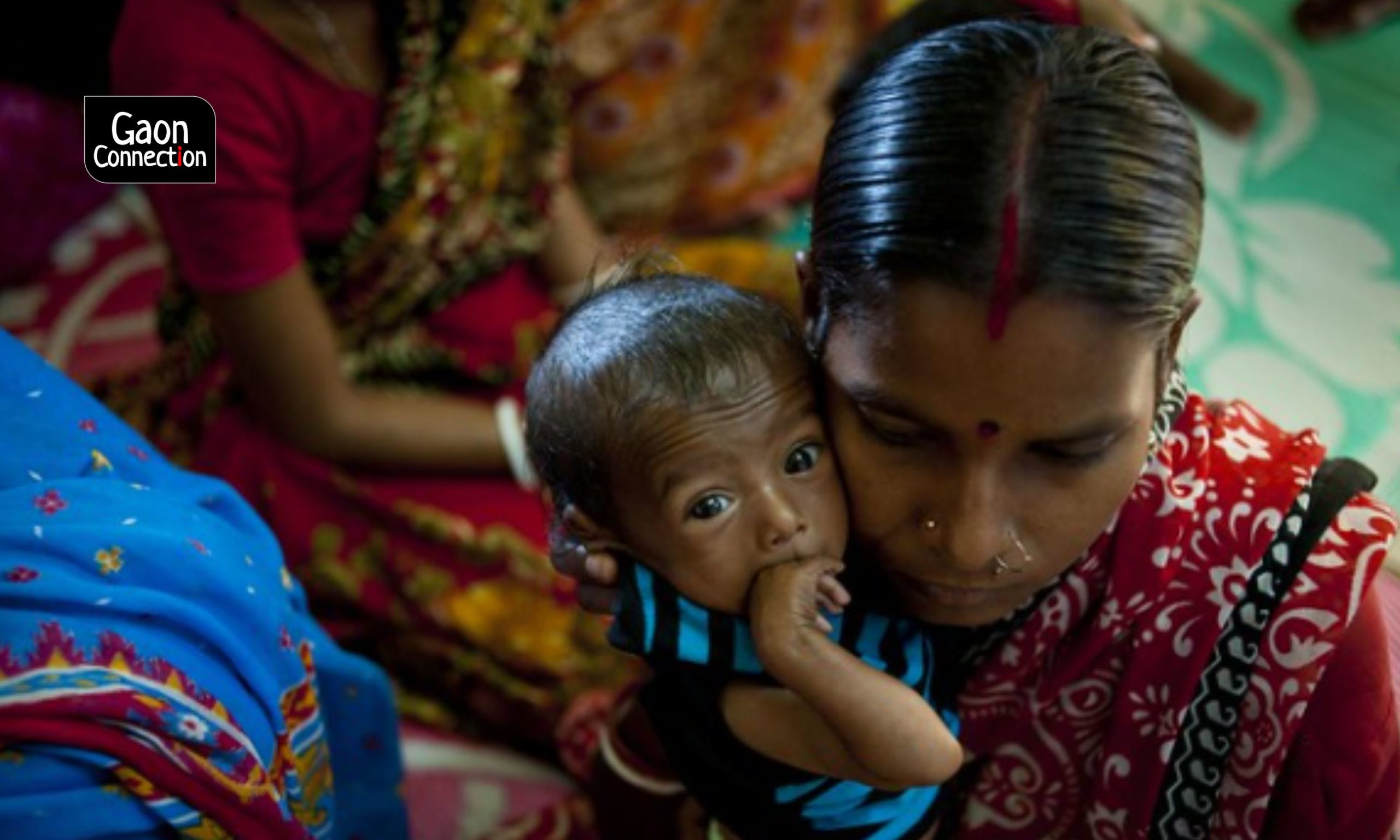
A severely malnourished child and his mother waits to be served food at a Nutrition Rehabilitation Centre. Photo: Unicef India
Between January and June this year, only 31.7 per cent of families with under-3 malnourished children reported receiving additional ration or nutritional support in rural Jharkhand. In other words, nearly 70 per cent of under-3 malnourished kids in the state did not receive nutritional support for six months.
A survey by Right to Food Campaign, a non-profit fighting for hunger and food rights, also revealed that 45 per cent of children in the age group of 3 to 6 years did not receive supplementary nutrition during the first six months of this year.
Not only these kids, but 68 per cent of kids between six months and three years, and pregnant and lactating women did not receive take-home ration (THR) as part of their nutrition entitlements in the same period. On an average, 55 per cent of surveyed beneficiaries did not receive supplementary nutrition in the state.
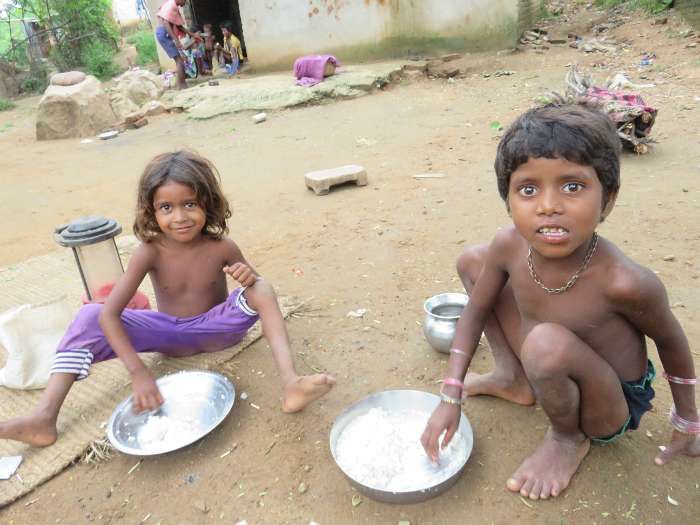
As part of the survey, 18,288 beneficiaries across 159 blocks in Jharkhand were interviewed between June 21 and June 30, this year.
Under the Integrated Child Development Services (ICDS), children between the age of 6 months to 6 years and pregnant and lactating women are provided supplementary nutrition through anganwadi centres. As part of the supplementary nutrition, beneficiaries get take home ration and hot cooked meals.
“The situation of anganwadi services in all the districts here is bad. These centres are the main source of nutrition for these children and women,” Ashrafi Nand Prasad, convenor, Right to Food Campaign, Jharkhand told Gaon Connection.
“However, anganwadis have not been providing these communities with a regular supply. The situation was the worst in the months of February and May. People then used to survive with only one meal a day, ” he added.
Monthly breakup of the entitlement distribution shows that the maximum number of beneficiaries received supplementary nutrition services only in January. The numbers showed a significant drop in May.


Also Read: What is the cost of childhood wasting and severe acute malnutrition in India?
Every second under-5 kid in Jharkhand is stunted
In the second wave of COVID19 pandemic, corona restrictions and lockdowns made a comeback because of which a large number of poor workers and daily wage labourers lost their livelihoods. This had a direct impact on their food intake. Given the disrupted nutrition services, the nutritional outcomes of women and kids are likely to deteriorate.
As per the National Family Health Survey-4 data for Jharkhand, every second under-5 child in the state is stunted (45 per cent) and underweight (47 per cent), and every third under-5 child is affected by wasting (29 per cent). Nearly 70 per cent of children between 6-59 months are anaemic.
The nutrition services are expected to improve the nutritional and health status of children, and reduce incidences of mortality, morbidity and malnutrition.
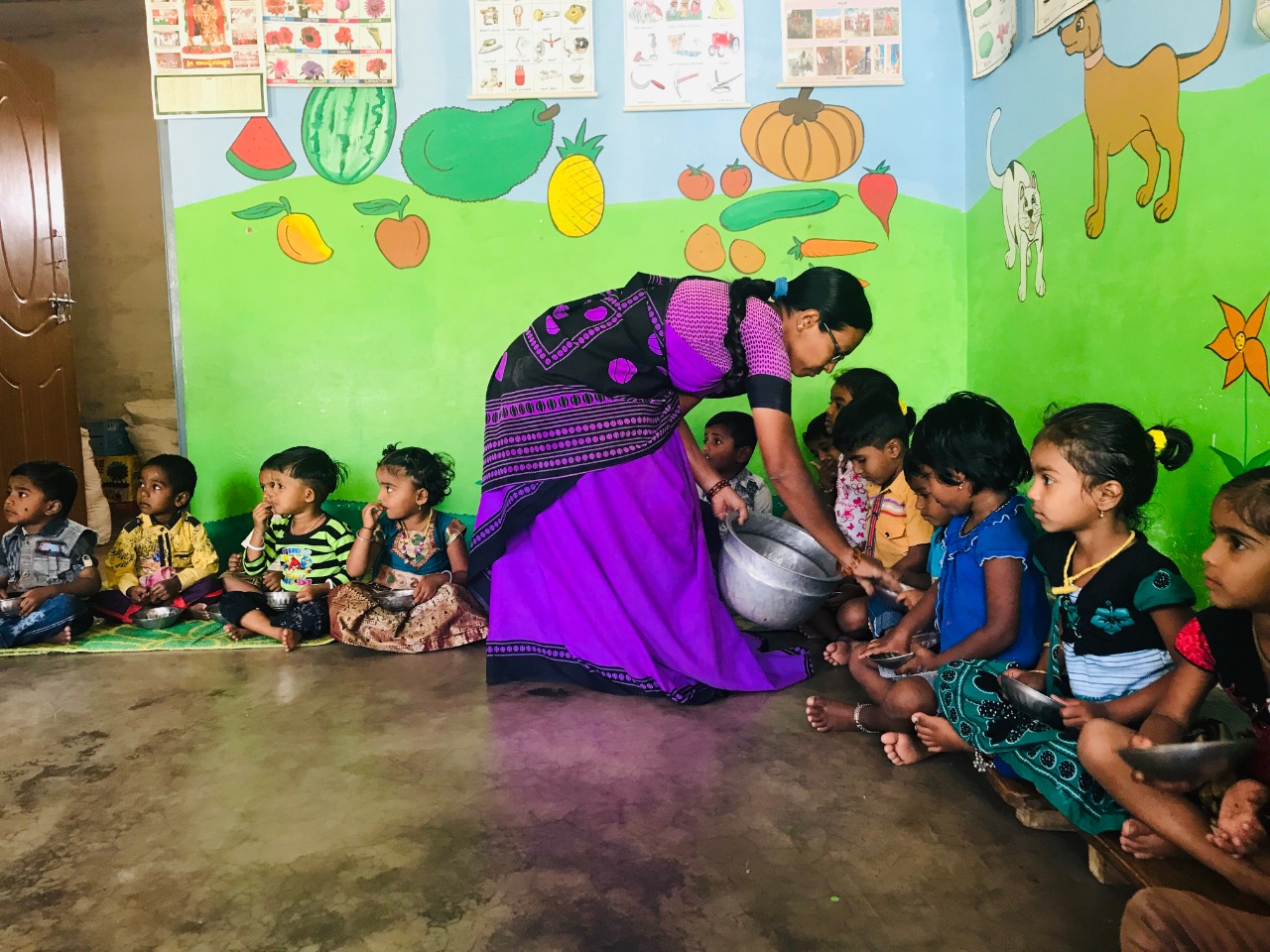
More rice, less ghee
As part of the supplementary nutrition programme, children and pregnant and lactating women are entitled to receive food items such as sugar, semolina, cooking oil, ghee or clarified butter, groundnut, pigeon peas, potatoes.
The survey report shows over 89 per cent of families with kids between 3-6 years reported receiving rice. Whereas, only 16 per cent claimed to have received ghee and nearly 40 per cent said they received cooking oil.
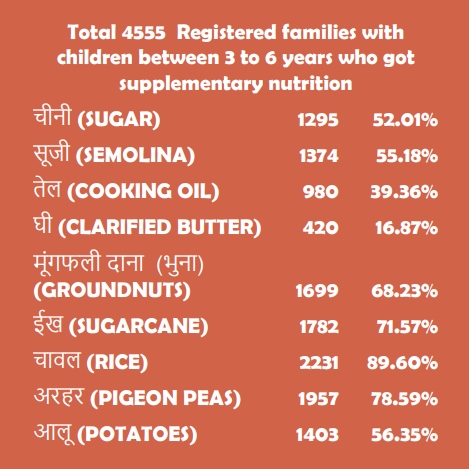
Situation is no different for pregnant and lactating women and children between six months to three years. Over 92 per cent of this group did not receive ghee during the six months of this year. Only 23 per cent beneficiaries of this group received cooking oil as part of take home ration. Dal was received by 68 per cent families and rice by 87 per cent.
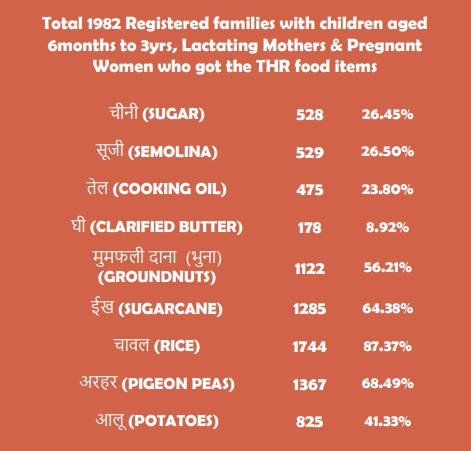
Beneficiaries risking lives for entitlements
In the wake of the COVID19 pandemic, anganwadi centres across the country are shut. But provisions were made to collect take home rations from the anganwadi and provide doorstep delivery in order to keep regular nutritional support to kids and women going, informed the Right to Food Campaign convenor.
Interestingly, the survey showed that a large proportion of distribution of take home rations happened at anganwadi centres. For children between 3-6 years of age, 75 per cent ration distribution happened at the anganwadis. Again, a large number of ration distributions — 79 per cent — happened from anganwadi centres for kids in the age group of six months to three years, and pregnant and lactating women.
Which meant, a large number of beneficiaries including pregnant and lactating women with their infants were forced to visit these anganwadi centres despite pandemic restrictions.
Only eight per cent and 15 per cent surveyed households for both groups (children between six months and three years along with pregnant and lactating mothers, and, between three and six years) said they received dry ration at their homes respectively.
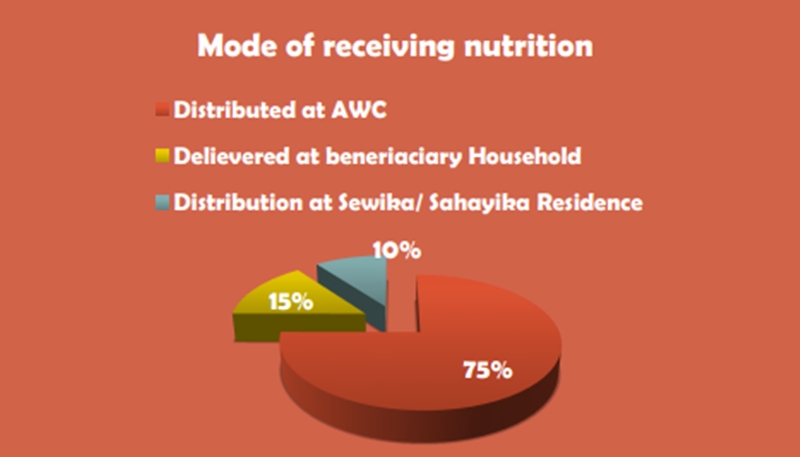

“The tribal communities are not very aware about their rights. Workers would go to these centres and ask beneficaities to come and receive their entitlements. Many of the tribal inhabitants did not even know that there was an option of doorstep delivery. They continued to visit anganwadi centres in the pandemic,” Prasad said.
NHRC issues notice to the state govt
Over the matter, the National Human Rights Commission (NHRC) has issued notices to the secretary of Union Ministry of Women and Child Development, and chief secretary of Jharkhand government on July 13. It has sought a detailed report on the matter within six weeks.
The Commission has stated that “the contents of the media report, if true, raise a serious issue of violation of the Right to Food, which is one of the basic human rights, which the State is duty bound to protect.

The media report published on July 6 highlighted the findings of the survey of Right to Food Campaign. It mentioned 55 per cent of ICDS beneficiaries did not receive supplementary nutrition even once in the first six months of this year.
Also Read: Severely malnourished under-5 children consumed by hunger in the pandemic

